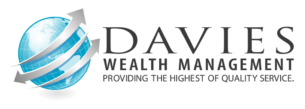Have You Checked Your Retirement Plan Lately?
It’s generally a good idea to review your employer-sponsored retirement savings plan at least once each year and when major life changes occur. If you haven’t given your plan a thorough review within the last 12 months, now may be a good time to do so.
Have you experienced any life changes?
Since your last retirement plan review, have you experienced any major life changes?
For example, did you get married or divorced, buy or sell a house, have a baby, or send a child to college? Perhaps you or your spouse changed jobs, received a promotion, or left the workforce entirely. Has someone in your family experienced a change in health? Or maybe you inherited a sum of money that has had a material impact on your net worth. Any of these situations can affect both your current and future financial situation and should be considered as you review your retirement savings needs.
In addition, your annual review is a good time to examine the beneficiary designations on your plan account to make sure they reflect your current wishes. This is particularly true if your marital situation has changed. With most employer-sponsored plans, your spouse is automatically your plan beneficiary unless he or she waives that right in writing.
Say, for example, you remarried and you would like your children to remain as primary beneficiaries on your retirement plan. In that case, your spouse would need to waive his or her right to the assets in writing.
Reassess your retirement income needs
After you consider any life changes, you may want to take another look at your future and evaluate whether your anticipated retirement income needs have changed.
Have your dreams for retirement changed? And if so, will those changes affect how much money you will need to live on? Maybe you’ve reconsidered plans to relocate or travel extensively, or now plan to start a business or work part-time during retirement. Or maybe your health or your spouse’s health has changed and you need to adjust your estimates for health-care costs down the road.
All of these factors can affect your retirement income needs, which in turn affects how much you need to save and how you invest today. Double-check your total accumulation goal and determine whether you will need to adust your savings or investment plan to strive for different amounts.
Re-examine your risk tolerance
In any long-term investment plan, you can generally expect that there will be times of uncertainty that will cause you to question your investment decisions. Following periods of prolonged increases in the markets, it’s not unusual to experience corrections or even bear markets.
When you hear media reports about stock market volatility, is your immediate reaction to consider selling some or all of the stock investments in your plan account? If that’s the case, you might want to revisit your risk tolerance.
Risk tolerance refers to how well you can ride out fluctuations in the value of your investments while pursuing your long-term goals. An assessment of your risk tolerance considers, among other factors, your investment time horizon, your accumulation goal, and assets you may have outside of your plan.
If your time horizon is decades or you have a lot of assets outside of your plan, your investment risk tolerance might be higher than someone who is less than 10 years from retirement or has little other savings.
There are many tools available to help you evaluate your risk tolerance. These are typically questionnaires that ask about your personal financial situation and your opinions on various investing scenarios. After answering the questions, you will likely be assigned a risk-tolerance ranking, such as conservative, moderate, or aggressive. In addition, suggested asset allocations are often provided for consideration.
Is your asset allocation still on track?
Once you have assessed your current situation related to life changes, retirement income needs, and your risk tolerance, a good next step is to revisit your asset allocation.
Is your investment mix still appropriate? Should you aim for a higher or lower percentage of aggressive investments, such as stocks?
For example, if you’ve determined that you will probably need to accumulate more than you originally estimated, you can strive for this new goal by increasing your contribution dollars, striving for a higher return, or both.
To strive for a higher return, you might consider investing a larger portion of your money in stocks. Alternatively, if you determined that you do indeed have a hard time sleeping at night when the stock market is volatile, you may want to consider investing a larger portion of your portfolio in less-risky asset classes, such as bonds and cash.
Regaining your balance
On the other hand, maybe you’ve concluded through your review that your original asset allocation is still appropriate for your needs, but your portfolio has strayed off track due to market performance. In this case, there are two ways to rebalance your portfolio.
The quickest way is to sell investments in which you are overweighted and invest the proceeds in underweighted assets until you hit your target. For example, if your target allocation is 75% stocks, 20% bonds, and 5% cash but your current allocation is 80% stocks, 15% bonds, and 5% cash, then you’d likely sell some stock investments and invest the proceeds in bonds.
Another way to rebalance is to direct new investments into the underweighted asset classes until the target is achieved. Using the example above, you would direct new contribution dollars into bond investments until you reach your 75/20/5 target allocation. Then you would adjust your allocation for future contributions back to that original allocation. This process may take a little longer, helping you ease back to your original target, but the same result will be achieved.
Revisit your plan rules and features
Finally, an annual review would not be complete without a fresh look at your employer-sponsored plan documents. Check those documents to make sure you fully understand how your plan works and to see if there are any additional plan features that can help you better pursue your retirement savings goal.
For example, if your plan offers a Roth account and you haven’t investigated its potential benefits, you might consider whether directing a portion of your contributions into it might be a good idea. Roth accounts do not offer a tax benefit at the time you contribute, but qualified withdrawals are tax-free.¹
Also consider how much you’re contributing in relation to plan maximums. Could you add a little more each pay period? If you increase your contribution by just a percentage point or two, you may not even notice the difference in your paycheck. But over time, that small amount can potentially add up through the magic of compounding.
If you’re 50 or older, you might also review the rules for catch-up contributions, which allow those approaching retirement to contribute more than younger employees. [Special rules apply to 403(b) and 457(b) plans.]
A little maintenance goes a long way
Although it’s generally not a good idea to monitor your employer-sponsored retirement plan on a daily or even monthly basis, it’s important to take a look at least once a year to account for any changes in your life, your retirement income needs, or your risk tolerance and make any necessary changes to your asset allocation. You’ll also want to make sure you’re taking full advantage of the opportunities offered with your plan, if they make sense for you. With a little annual maintenance, you can help keep your plan on track.
¹A qualified withdrawal from a Roth account is one that is made after a five-year holding period and you either die, become disabled, or reach age 59½. Nonqualified withdrawals from Roth accounts are subject to regular income tax and a 10% tax penalty (to the extent the withdrawal represents earnings).





Leave a Reply